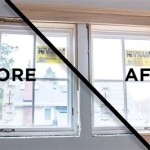When you’re painting your interior walls, it’s important to use the right primer. An interior wall primer serves as a base layer that prepares the wall for painting. It improves the adhesion of paint to the surface, helps to hide any imperfections on the wall, and can even help to create a smoother finish. With so many primers available on the market, it can be difficult to know which one is best for your interior walls.
Types of Primers
Primers come in a variety of types, each with their own advantages and disadvantages. Here’s a brief overview of the most common types of primers:
- Oil-based primer: Oil-based primer is ideal for interior walls that have been previously painted with oil-based paint. It provides superior adhesion and is highly resistant to water and stains. The downside is that it can be difficult to apply, and the fumes are strong and can be difficult to ventilate.
- Water-based primer: Water-based primer is suitable for interior walls that have been previously painted with latex paint. It’s easier to apply than oil-based primer, and the fumes are less intense. However, it doesn’t provide as good of an adhesion as oil-based primer, and it can be more prone to water and stain damage.
- Shellac-based primer: Shellac-based primer is ideal for interior walls that have been previously painted with oil-based paint. It provides superior adhesion, and it’s highly resistant to water and stains. The downside is that it can be difficult to apply, and the fumes are strong and can be difficult to ventilate.
- Latex primer: Latex primer is suitable for interior walls that have been previously painted with latex paint. It’s easy to apply, and the fumes are less intense. However, it doesn’t provide as good of an adhesion as oil-based primer, and it can be more prone to water and stain damage.
Factors to Consider When Choosing a Primer
When choosing a primer for your interior walls, there are several factors to consider. Here are a few of the most important ones:
- Surface: The type of surface you are priming will determine which primer is best. If the wall is new and unpainted, you’ll need to use an appropriate primer for the type of surface.
- VOC levels: Volatile organic compounds (VOCs) are chemicals that can be released into the air from certain paints and primers. It’s important to choose a primer with low VOC levels to ensure that the air in your home is safe.
- Budget: The cost of a primer can vary depending on the type and brand. Make sure to factor in the cost when choosing a primer.
Conclusion
Choosing the right primer for your interior walls is essential for creating a successful paint job. There are a variety of primers available, each with their own advantages and disadvantages. Be sure to consider the type of surface, VOC levels, and budget when selecting the best primer for your needs.















Related Posts








